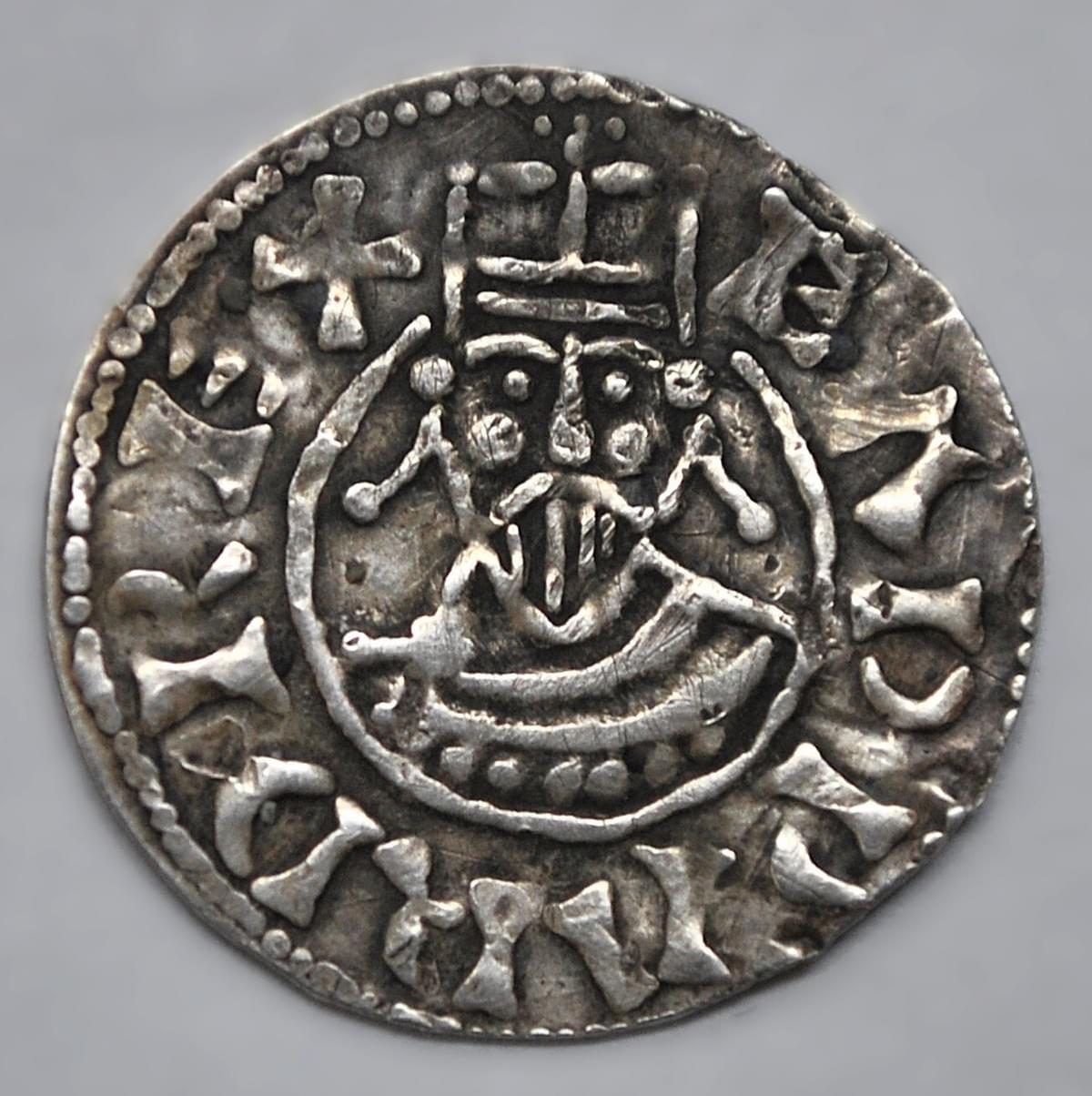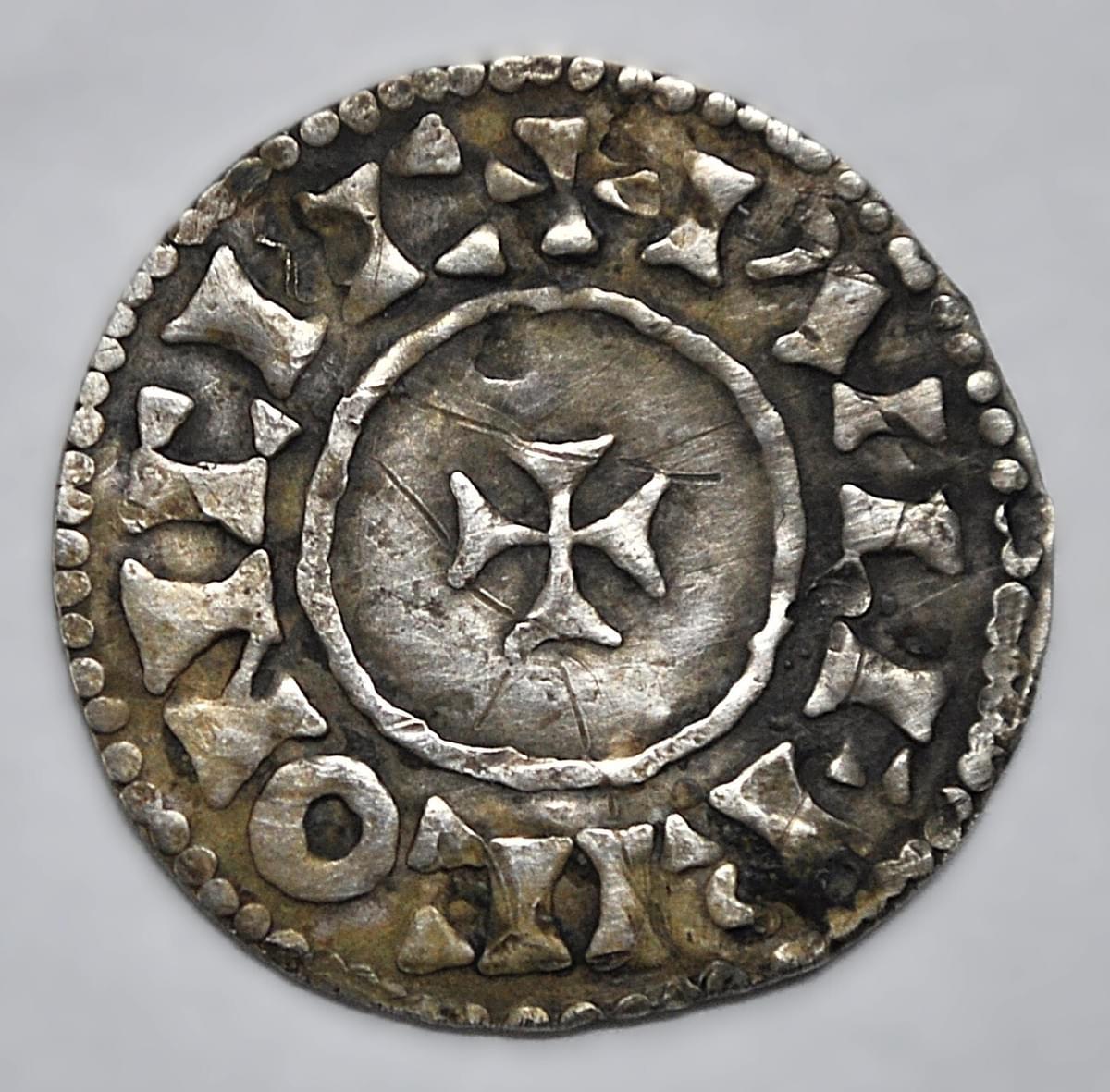The featured item on our online store this week is a hammered silver penny from the reign of Edward the Confessor. It was struck at Chichester Mint by the Moneyer, Wulfrie. The example presented here is a bold, very fine. Ref: S.1183
Edward the Confessor, whose reign as King of England spanned from 1042 until his death in 1066, was a pivotal figure in late Anglo-Saxon history. As the son of Æthelred the Unready and Emma of Normandy, his formative years were significantly shaped by the Danish conquest of England, which necessitated an extended period of exile in Normandy. This period abroad profoundly influenced his disposition and political proclivities, cultivating a pronounced affinity for Norman culture and customs. Upon his restoration to the throne, a brief re-establishment of the House of Wessex occurred. Nevertheless, his governance was characterized by a precarious equilibrium, marked by an enduring tension between the formidable English earls, particularly the influential Godwin family, and his reliance upon Norman advisors and confidantes. Edward's profound personal piety was a distinguishing feature of his rule, subsequently leading to his later canonization and the enduring appellation "the Confessor". His most enduring architectural contribution is the magnificent Westminster Abbey, which he reconstructed and expanded, thereby establishing it as the preeminent site for royal coronations and interments.
The relationship between King Edward and the Godwin family was intricately complex and frequently contentious. Initially, Edward's ascendancy and sustained rule were significantly contingent upon the support of Earl Godwin of Wessex and his progeny. However, as the Godwin family's influence expanded, particularly that of Harold Godwinson, their burgeoning power began to present a formidable challenge to royal authority. This dynamic culminated in periods of intense rivalry, notably the exile of the Godwin family in 1051, followed by their triumphant reinstatement in 1052, largely attributable to substantial public and aristocratic endorsement. Despite these adversarial phases, Harold Godwinson maintained his position as the most potent magnate in England subsequent to the King, effectively administering the realm during Edward's later years and thereby establishing himself as a plausible successor in the estimation of numerous English nobles. The King's ultimate inability to produce an heir emerged as a critical determinant contributing to the momentous events subsequent to his passing. While several claimants to the throne materialized, including William, Duke of Normandy (who asserted a promise of succession from Edward), and Harald Hardrada, King of Norway, it was Harold Godwinson who was selected by the Witan (King’s Council) and coronated King shortly after Edward's burial. This contentious succession immediately precipitated a state of upheaval in England, directly leading to the Norman Conquest later that year. Although Edward's own reign was predominantly tranquil and marked by a reassertion of royal authority following a period of instability, his failure to ensure a universally accepted succession had profound and irreversible ramifications, fundamentally altering the trajectory of English history, language, and cultural development.

